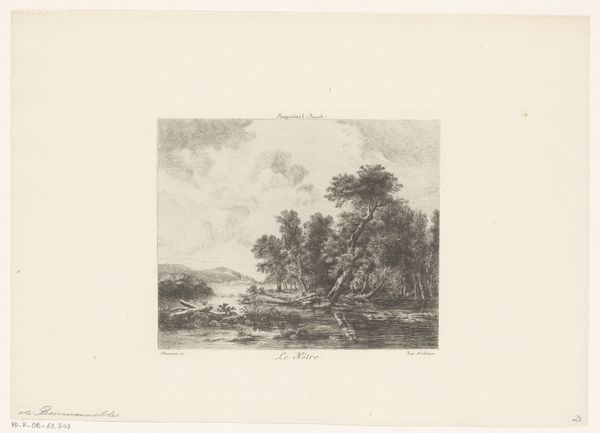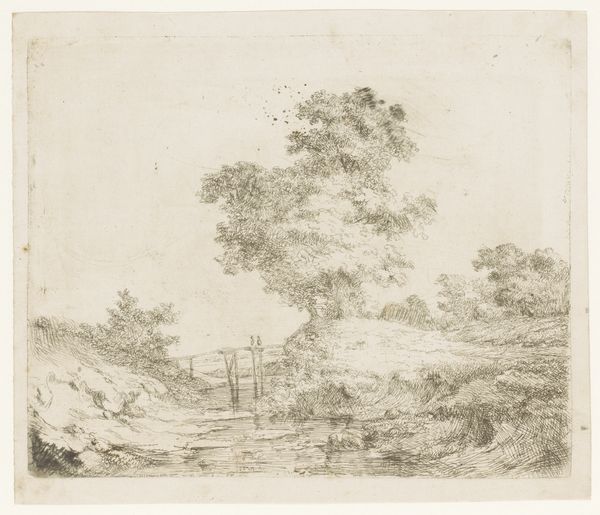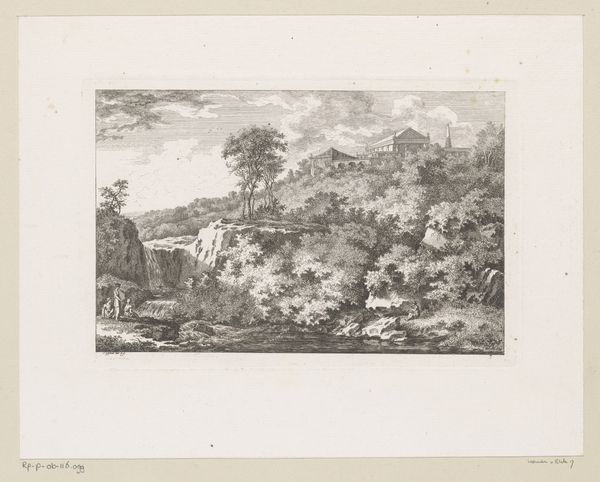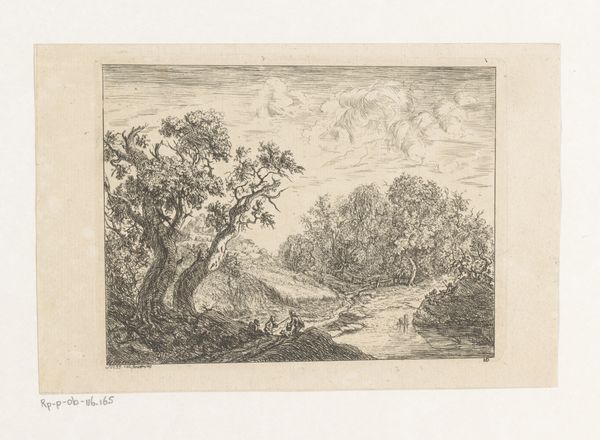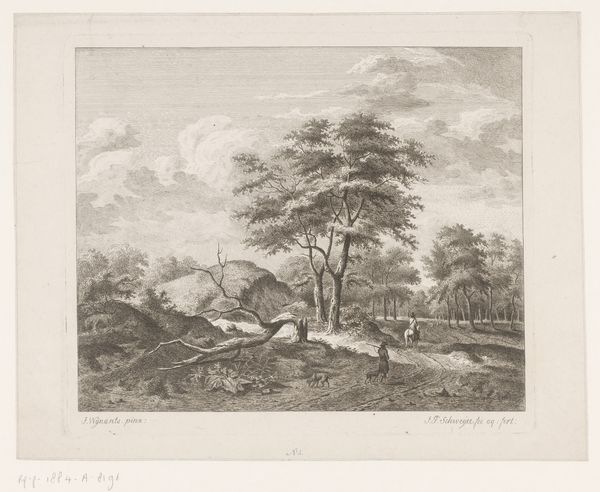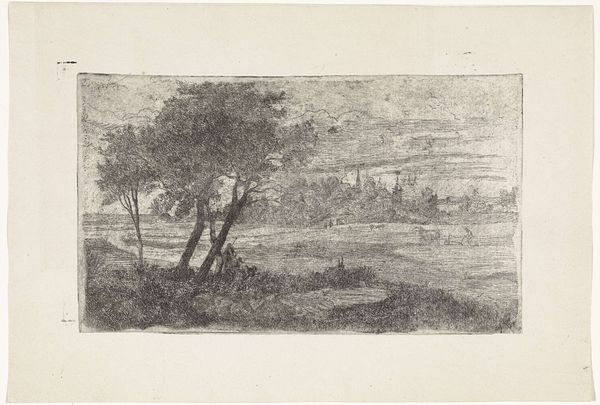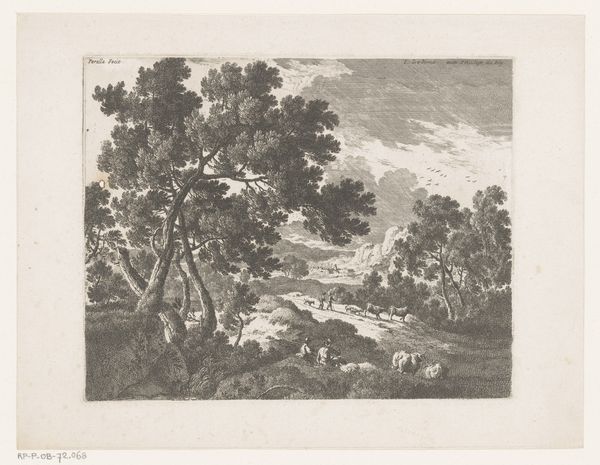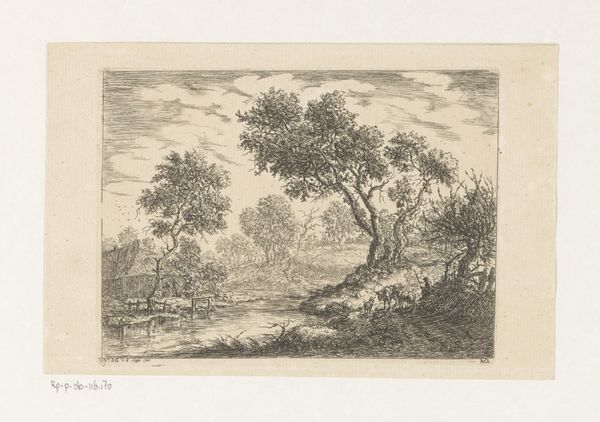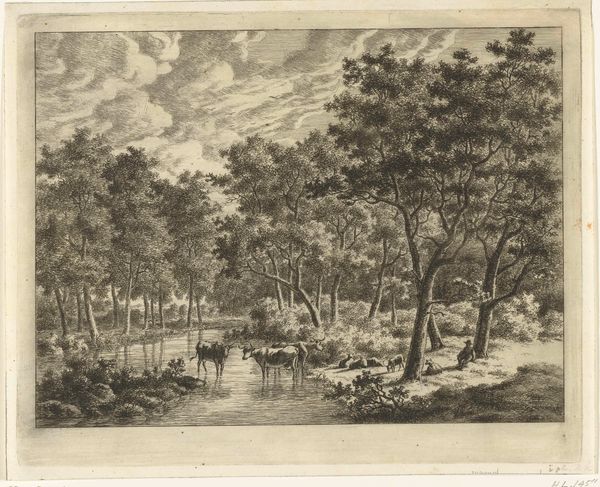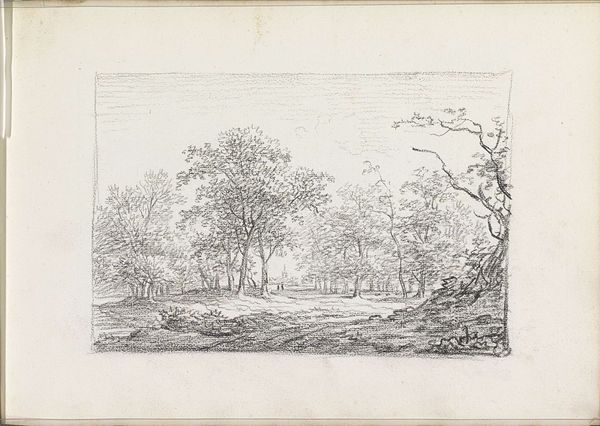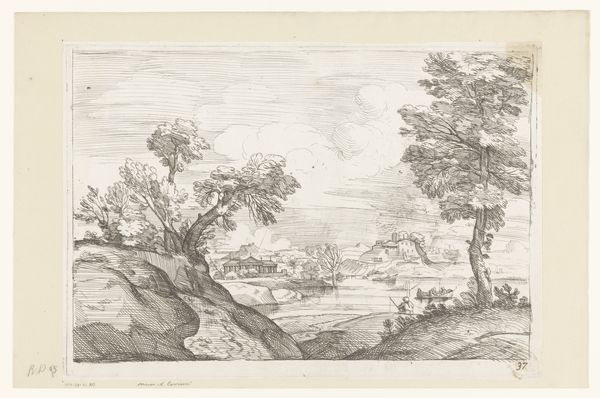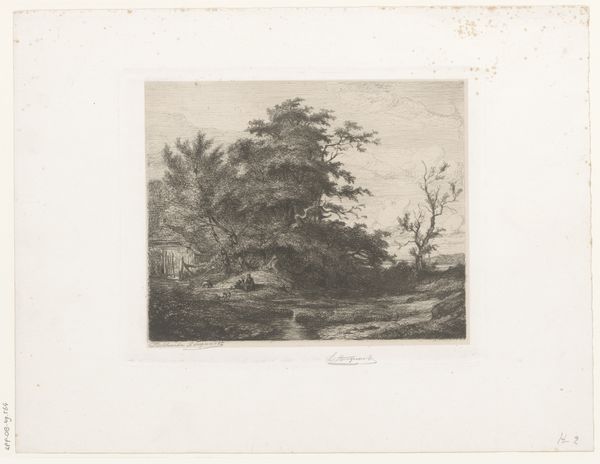
drawing, print, etching
#
drawing
# print
#
etching
#
landscape
Dimensions: height 162 mm, width 245 mm
Copyright: Rijks Museum: Open Domain
Editor: Here we have "Landschap bij een oever te Eext in Drenthe," a landscape by Carel Lodewijk Hansen, dating roughly from 1775 to 1840. It’s a detailed etching and a drawing at the same time, currently housed in the Rijksmuseum. I'm immediately struck by the balance of light and shadow, the intricacy of the line work, it’s delicate. What draws your eye? Curator: The linear precision indeed commands attention, doesn't it? Note how the artist utilizes etching to simulate depth, not through stark contrast alone, but via controlled gradations in tone. How does the repetition of horizontal lines, particularly within the landscape’s layers – water, ground, horizon – affect your perception of space? Editor: I think it flattens the image somewhat. The parallel lines create a sense of surface pattern, almost like a tapestry. It’s like the eye doesn’t travel as deeply into the scene. Curator: Precisely! Consider how the artist has deployed line, tone and direction in terms of constructing spatial tension. This is not simply representation. Instead, the piece uses certain formal elements to challenge classical perspective by pushing toward an awareness of surface and structure. What semiotic systems can you observe at work within this pictorial arrangement? Editor: The trees seem to frame the scene, drawing my eye toward the figures in the distance, while the fallen tree in the foreground provides this contrasting horizontal anchor to it all. Curator: Good observation! Now consider that the overall arrangement is one of controlled dissonance. It doesn't merely portray a scene but rather proposes a structured meditation on nature itself. A perspective indeed! Editor: This close reading highlights elements that I initially overlooked! It prompts me to consider how the formal properties create that specific tension within the seemingly idyllic landscape. Curator: Formalism enhances and directs the work. Examining compositional components and material structure brings forth further awareness.
Comments
No comments
Be the first to comment and join the conversation on the ultimate creative platform.
